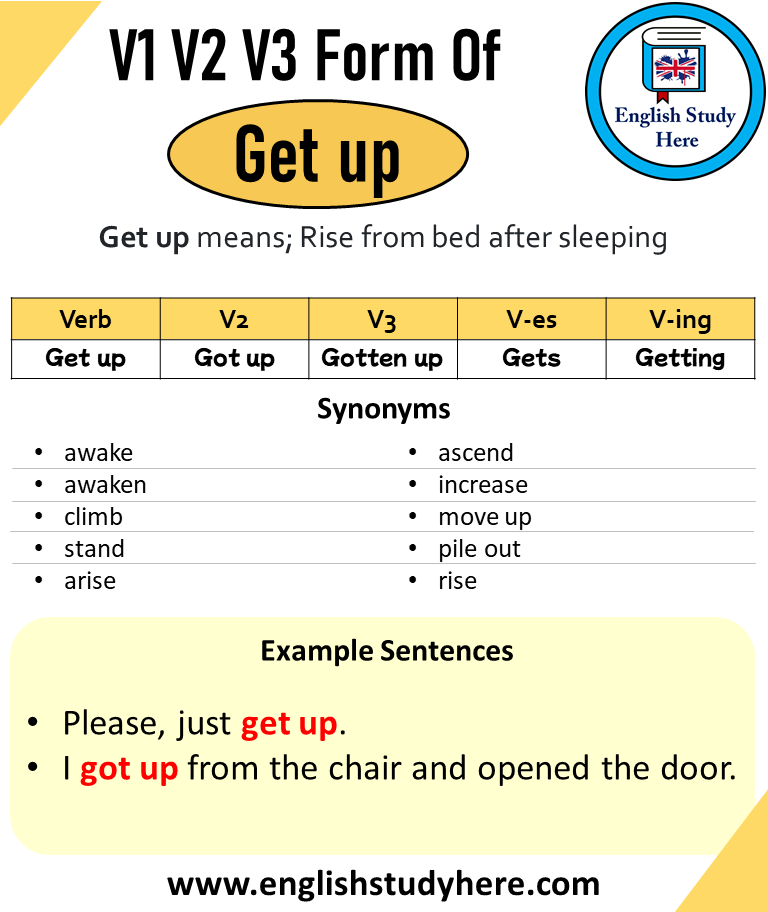Get Past And Past Participle Form V1 V2 V3 V4 V5 Form of Get
Are you puzzled by the different forms of the verb “get” and how to use them? You’re not alone.
Many people find it tricky to navigate the past, past participle, and other forms of this common verb. But mastering them is easier than you think. Understanding these forms is crucial for clear communication and effective writing. You’ll discover the V1, V2, V3, V4, and V5 forms of “get” and how to use them effortlessly in your daily conversations and writing.
Imagine speaking and writing with confidence, knowing exactly which form to use and when. That’s what awaits you as you dive deeper into this guide. So, are you ready to transform your grammar skills and boost your language confidence? Let’s get started!

Credit: englishgrammarhere.com
Forms Of Get
The verb “get” is used often. It has different forms. The base form is get. The past simple form is got. The past participle is gottenor gotin British English. The present participle is getting. The third person singular is gets.
See the table below for a quick summary:
| Form | Word |
|---|---|
| Base Form (V1) | get |
| Past Simple (V2) | got |
| Past Participle (V3) | got/gotten |
| Present Participle (V4) | getting |
| 3rd Person Singular (V5) | gets |
Use these forms to speak and write correctly. Practice helps to remember them.

Credit: englishstudyhere.com
Past Tense Variations
The verb “get” has many forms. Understanding these forms can help in learning. In the past tense, “get” becomes “got.” This is the V2 form. It’s simple and used often.
For the past participle, “get” changes to “gotten” or “got.” Both are correct. “Gotten” is more common in American English. “Got” is used in British English.
Here is a table of all forms:
| Base Form | Past Simple | Past Participle | Present Participle | 3rd Person Singular |
|---|---|---|---|---|
| get | got | got/gotten | getting | gets |
Past Participle Applications
The past participle form is useful in many sentences. It helps to show completed actions. In English, “get” changes to “got” and “gotten.” These forms are used with helping verbs. For example, “has gotten” shows a finished action. Sentences like “She has gotten her book” use this form. It is also in passive voice. “The book was gotten by her” is one example. This form makes sentences clear. It shows time and order.
Past participles are important in writing. They make sentences rich and full of meaning. Using them, we can share stories or facts. They tell us what has happened. This helps readers to understand better. Past participles are easy to learn. They are key parts of English grammar. Knowing them makes writing smoother and more engaging.

Credit: www.youtube.com
Conclusion
Understanding the forms of “get” is useful in English learning. Mastering V1, V2, V3, V4, and V5 forms helps improve grammar. Practice regularly to remember these verb forms. Use them in daily conversation for better fluency. Simple exercises can aid in learning.
Keep a notebook to track your progress. Always aim for clarity in your communication. Explore more verbs to enhance your skills. Enjoy the journey of learning a new language. This effort will enrich your vocabulary. Stay curious and motivated. English is fun to learn with practice.






